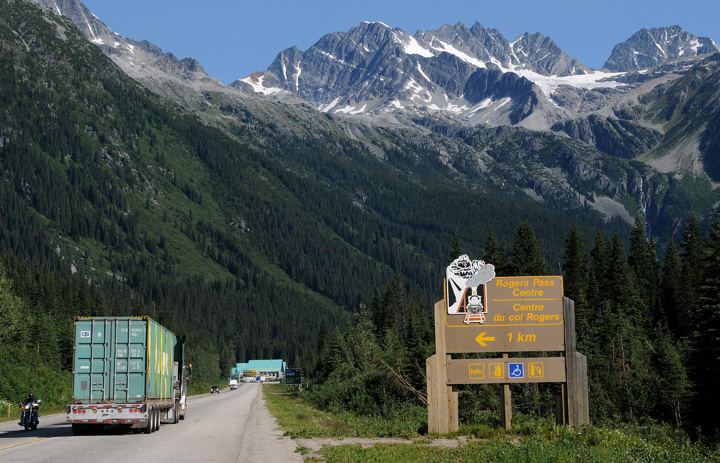Under Mount Tupper in British Columbia’s Glacier National Park, a sprawling system of uncharted caves offers a group of unlikely explorers a chance to venture into the unknown.

These are not the cartographers of yore. Today, the Cabots, Cartiers and de Champlains mapping the wilds of Canada have been replaced with adventurers of a more amateur sort, armed with time to kill and money to burn.
The nine-member expedition, which includes an accountant and teacher as well as scientists and cave guides, is planning to head into the network of caves in October.
The explorers are all volunteers and trips such as theirs are on the rise, the Royal Canadian Geographical Society says.
The Raspberry Rising trip — named after the cave system’s hidden entrance — is one of several the Society says they have provided funding to this year through their expeditions program.
“The last probably two to four years, we’re seeing more applications coming in, and we’re seeing better applications coming in,” says Michael Schmidt, an explorer based in North Saanich, B.C. and the co-chair of the expeditions program. A separate program funds scientific research.
The program has seen applicants double from 2011, according to John Geiger, the president of the RCGS.
That year, there were seven seriously considered applicants, he says. For the 2012 and 2013 programs, there were 14.
The RCGS grants range from $500 to $15,000 for expeditions. The grants go largely to experienced amateurs, for trips that straddle the line between field-work and adventure travel. The expeditions must combine education and outreach — including social media campaigns — with physical challenge and remote locales.
“Ten years ago somebody might have said, well look, the whole country’s been explored, what else is there to do?” Schmidt says. “And you know we keep seeing people who are going out within our expeditions program, and they’re kind of poking into places that either haven’t been or have rarely been visited.”
Modern explorers bring high-tech equipment underground and use satellite technology to tweet from ice-floes. Expeditions also consider First Nations’ histories before claiming to have mapped or documented a mountain or island for the first time.
In Nunavut, a two-month expedition is currently underway to paddle across Baffin Island in kayaks the team built using traditional Inuit methods. The four-person team includes professional explorers, a doctor and a professional kayaker.
Last week, a McMaster PhD student named Adam Shoalts began a solo canoe expedition to northern Quebec and Ontario, where he says he will map several waterfalls he claims to have discovered last year.
This fall, the group heading underground will begin squeezing through tight passageways, scuba diving through tunnels of melt water, and climbing waterfalls frozen into slicks of ice in order to map the system for the first time. And those are just the sections of the cave they have already seen.
“With the underground and cave exploration, you do not know what’s around the corner, what’s beyond your head lamp. You can only guess,” says Nicholaus Vieira, a self-described “cave bum” who conducts cave tours and lives in Canmore, Alta.
The Raspberry Rising expedition will be risky, time consuming and expensive. Tens of thousands of dollars have already been spent and the project could take years.
“We do this for fun,” Vieira says. “That’s the messed up part.”
Geiger says exploration has generally flourished in times of wealth and stability. And in a largely urban, plugged-in, stable society, it makes sense that people crave adventure, he says.
“We’re comfortable, we’re safe, we’re wealthy, we’re well educated,” Geiger says.
“And so we’re in an incredibly comfortable place in the context of human evolutionary history. But there’s something that makes us want to go further, and to experience risk, and to test ourselves.”
Canada has long been a strong country for explorers, says Jason Schoonover, an ethnographer and spokesman for the Canadian chapter of the Explorer’s Club.
The New York-based Club, which has included Neil Armstrong, Sir Edmund Hillary and Tenzing Norgay among its members, has given its highest medal to Canadians the last three years.
This year, deep-sea explorer James Cameron, better known as the director of Titanic, received the Explorer’s Medal for his solo dive into the Mariana Trench.
In 2012, the award went to Alberta-based paleontologist Phil Currie, and the year before it was presented to ethnographer Wade Davis, who is from B.C.
Membership to the Club — which requires sponsorship by current members and evidence of scientific field work — has been growing yearly, Schoonover says.
And expeditions within Canada are fuelled by increasing interest in the North.
“There’s a lot more focus on the Arctic right now. And it’s warming up, which is making it much more physically feasible to do this kind of work.”



Comments